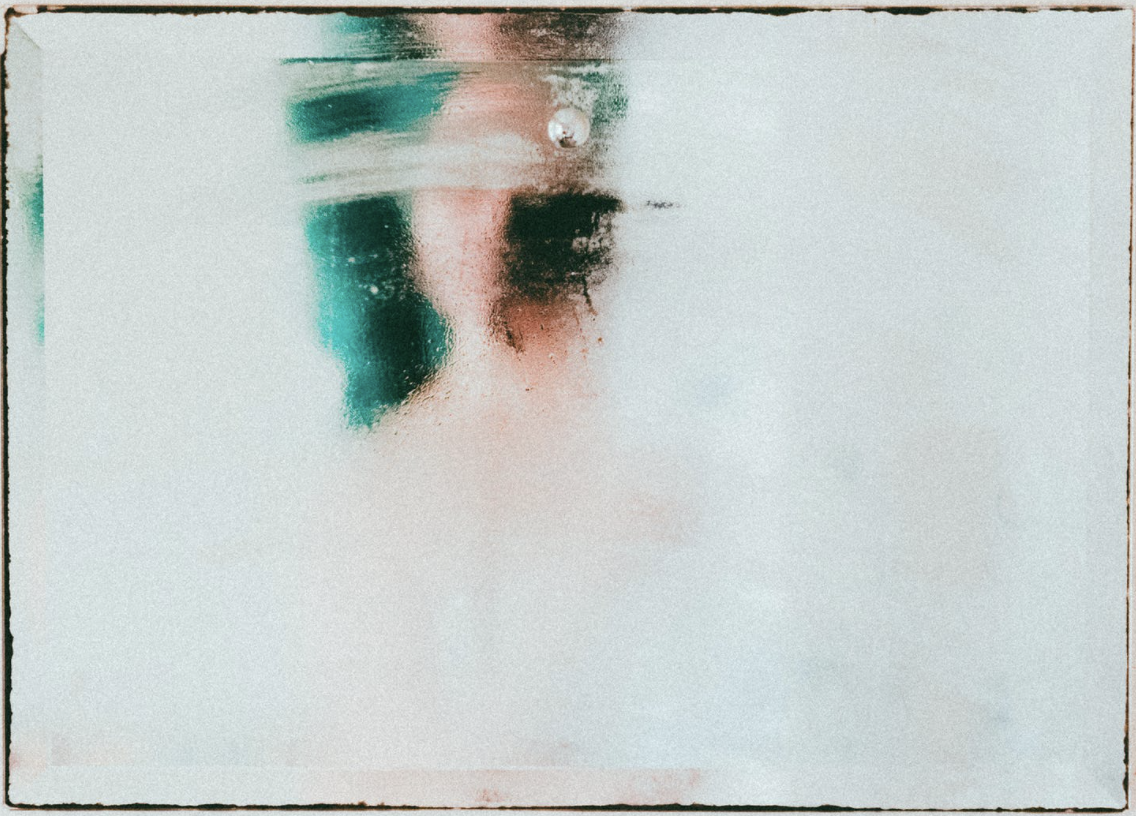I discovered Ana’s work through Instagram and something in me was touched by it from the first moment on. Her work is very honest, straight to the heart, vulnerable in a way but also very powerful.
For the following I asked Ana if she wants to do an interview with me:
Luna Maluna Gri: Tell me a bit about yourself and your work.
Ana Loureiro: My name is Ana Loureiro and I’m a visual artist. I call myself that even though my main study is painting. I studied painting for four years at the faculty of fine arts at Porto University. I finished ten years ago and I moved to Vienna in 2013. I came here to do Erasmus (at the Academy of fine arts) for one semester, which was my graduation semester and I really liked the city. After I was finished with my studies I decided to move to Vienna and in the beginning it was kind of experimental because I didn’t know if I will be able to do something here as a foreigner and it’s always very challenging to adapt to a new place, there are always a lot of barriers, but I did it my way and it took some time to understand how it works here, how I can establish myself as an artist here. About my work; nowadays it goes more into multimedia, I work with a lot of different mediums. In the last four – five years I started to do more work about the relationship between architecture and memory, the memory and space. In the beginning I started to approach it in a very autobiographical way. I dug inside the spaces where I lived and I started to develop that project because the first years of being in Vienna I was moving constantly from place to place, so everything was very impermanent. I find it interesting to analyze this and to analyze all those changes and how all the moving around influenced my relationships with others, with the people I was living with, my attachment to those places and to analyze this relationship between the memory and the space. Nowadays I’m working more with the challenges of communication and my newest project goes a bit out of the memory and space area. It’s still in it’s experimental stages and it’s more about this idea of you wanting to say something but sometimes you don’t find the correct words. Even in your own language, it can sometimes be a bit challenging because sometimes you have this difficulty in finding the correct expression and words in a situation and sometimes you even feel more comfortable expressing it in other ways (like drawing for example). Sometimes the feelings and emotions take control of your rational side and sometimes communicating those emotions can be tricky. So it’s also about creating a self code to communicate those ideas and it can be through different ways. Now it’s a little bit about myself, the things that surround me, my thoughts about different situations or some situations that happened in my life recently, so it’s also about expressing those feelings and those emotions with a specific code that I feel that fits more with what I was going through at the moment and the feeling(s) I had then.
LMG: It’s interesting to find out which way works better in different situations to communicate different things.
AL: Yes and that’s the challenge. What I’m always trying to achieve in my work is to find out which is the best medium to communicate that idea or which fits the work, the topics or what you want to say more I try to complement the theoretical part and the practical part to find a middle term, like a bond, that connects both of them. For me, with my work the most important thing is the personal aspect of it. The viewer will see the work and probably will not understand it or they will be a bit confused. Past a very clear message, I like to make you think. And I think that is also what art is about in my perspective, it’s making you think and not giving you all the answers. Of course each artist is an individual so the results will always be different.
LMG: How and why did you start creating art?
AL: I don’t know exactly when I started, I think it was a process. I always knew as a kid what I wanted to be. I knew that it’ll be something related to creativity. In the beginning I was more into performance arts because I started dancing when I was a kid and I also started to study music, so art was always in my life since I was very young but it was not something that was imposed on me by anyone. It was something that I really wanted to discover by myself and I remember that all my activities were always very connected with creativity. It was something very natural. Then in High School, at least in Portugal, the system makes you select what you want to study in your time at school (Humanities, Arts, Science,…). At the time I picked visual arts, so the main focus of my High School years were on art. As a class we then also started to do some exhibitions with a professor. I grew up in a small town in Portugal which is not very developed in the cultural field, so we were a little bit isolated, trying to do things and initiatives. Then when I went to University I was very divided between music and fine arts but I decided to take fine arts because I found it to be overall more inclusive and more open to different things. At the faculty everything was very intense. We had so much courses and less time although our study was four years, we had so many courses to do and not so much time to work on our Portfolio and it was actually in Vienna when I came to the Academy that I had this opportunity to develop myself more into an individual artist and I could work more developing my Portfolio and what I really wanted to do. It was a very smooth process and I would say that I started to create art in High School but it was here, after I finished my studies, that I could start to do the things that I could call my art or what I really like to do within art.
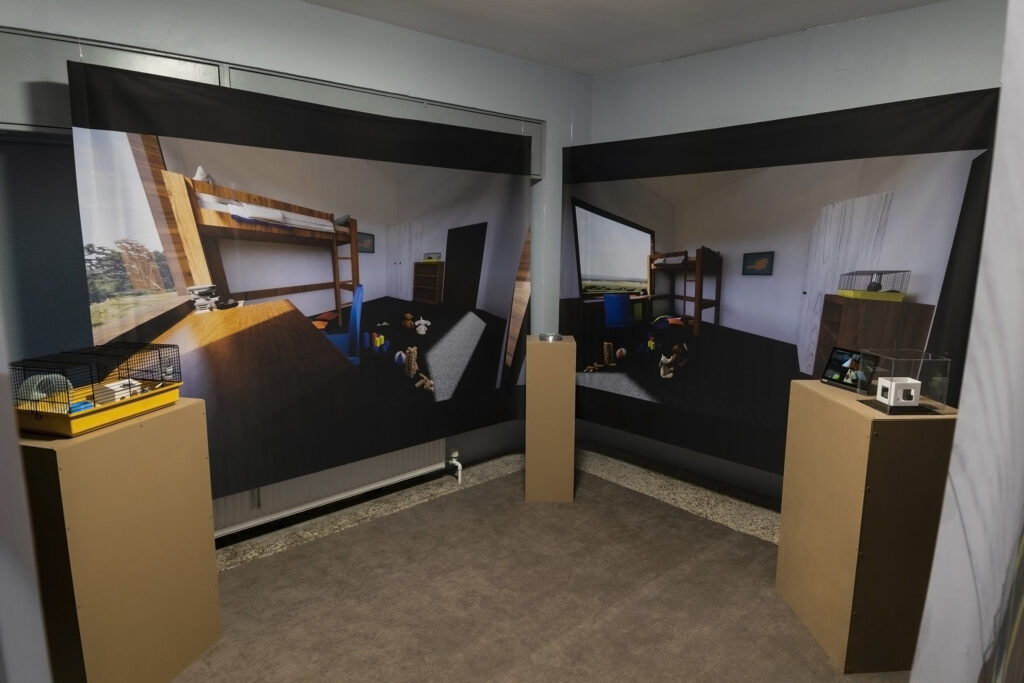
‘Substratum of memories, participant #1’ by Ana Loureiro
LMG: What role does creating art play for you?
AL: I will not say that it’s my life but it’s very connected with it. It’s like a necessity that I have of pulling this out and to do something with it. It’s sometimes like an urgency of using my life and what surrounds me and experiences that I make. It’s nice to work on a topic or an issue and explore it. It’s like a raw material to express and it’s something natural like breathing, a necessity. For me my works have this role in my life to use it as a material to understand, analyze and also research.
LMG: What does your creating process look like?
AL: Sometimes I feel like I make things in a very automatic way, also because of my studies, since where I studied first there was a very special care and a special and focus when you have a topic which you want to talk about, to do more theoretical research about it, see what other artists did, then you start to understand which methods, which techniques will fit better for what you want to say or what you want to portray and then start to do the work. So, I’d say my working method is very based on trying to bind theory and the more practical part together. For me it’s very important to have a base. I would not say research because that can be something very complex but more like a study about the topic that I want to do and then I make it. Sometimes it also depends on the time that I have to work on an artwork or project because sometimes the practical part can take a very long time, so I can not spend the time that I would want to digging into the research part. Of course I can do that in the future in the next steps of the project or with another project which is inspired by the one before. It’s always a balance of these two that are important in my working process.
LMG: What inspires you?
AL: It’s everything around me that inspires me and can be used as a subject for my work. I’m a bit of a sponge and I try to use it as something that I can use as an approach in my work. I would say the people around me, the environment around me, what happens nowadays in the world and arounds us, the daily life.
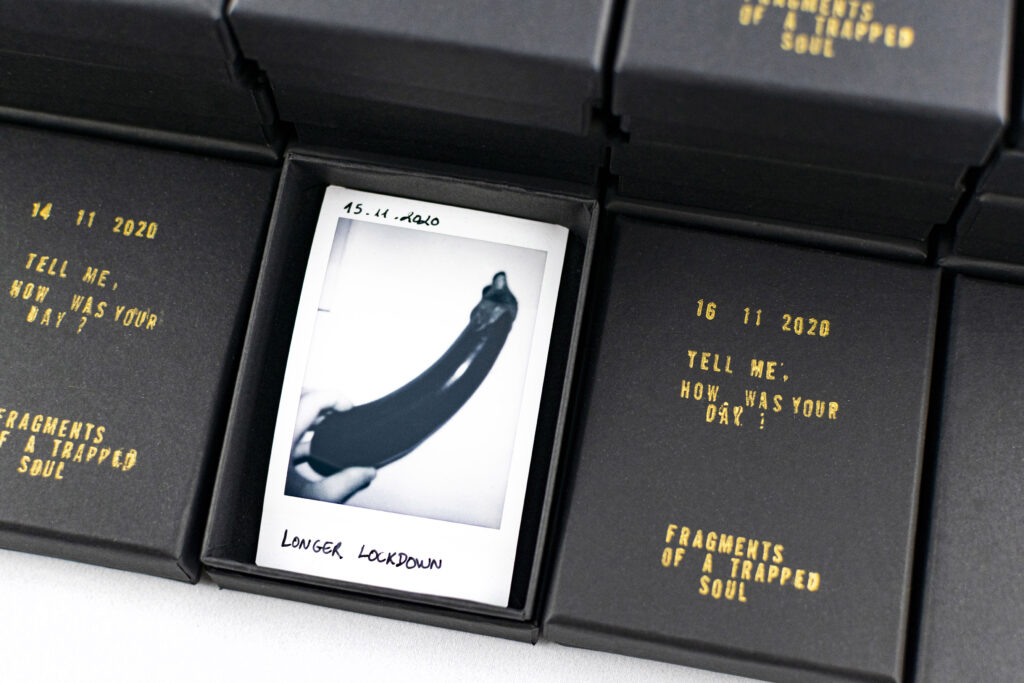
‘Tell me, how was your day?’ by Ana Loureiro
LMG: What is your experience with the art world?
AL: From what I experienced it’s very bittersweet. It’s a very competitive world and there are not so many opportunities for artists. My experience has been hard, in the sense of that it took time until I found the right way and until I found the people that are interested in showing my works. But I would say in Vienna I found more people who were more open to show my works and they were more interested in them and I found more support financially, so more motivation to go through with it. It’s always complex to find your own audience that will be able to showcase you and your work. From that point on you will be able to get more and more and more opportunities. It’s been bittersweet because I come from a country where there are not a lot of opportunities. In Vienna it’s very nice because you feel like there is more cooperation between artists and there is this sense of community, which in contrast to my hometown, there was not so much of that spirit, so I like to be here. But this is also very connected with social and economic reasons. Because when there is a more fragile economy there are less opportunities. This creates more competition and a lack of community, sometimes people are looking for opportunities for themselves and they are afraid of losing. I tasted a bit of the negative and the positive side so it was a process I would say. But now a lot of artists are still facing precarity and it’s always a fight to look for fair pay.
LMG: Is there something you would want to change about the art world? If yes, what and why?
AL: Yes, there are a lot of things that really need to be changed. Being an artist is living in this uncertainty, because you might sell something or you might get a funding or a scholarship which might give you money and stability for four, five months or a year, but then you never know what comes next, you never know if you’ll be able to get more support, to not only produce your artworks, but to survive. This is something where it is urgent to find a way to not make artists feel afraid of what’s coming next and give them more basic stability to continue on producing and surviving. What is also starting to get more common is that we almost have to pay to work. Nowadays, I see a lot of calls for proposals or applications where the artist has to pay for almost everything, you have to pay to apply and send our portfolio, you have to pay to have a space and then you have to pay for shipping your works, basically you have to pay for work and this is insane in my opinion. Of course, if you are not able to get funding or some financial support to cover all or at least some of these expenses, it is impossible to manage it. Some fees are really very high! A portfolio is like our CV, even more important than our CV, it’s actually who you are as an artist. For example, it’s like applying to work in a shop where they ask you for your CV and then you have to pay to send it, or you have to pay to have a job interview. I think this doesn’t happen in regular jobs, that you have to pay for someone to check your CV, etc. In some cases, if you want to exhibit you have to pay for all of these extra things, sometimes they are inviting you but you have to assume all the expenses and sometimes even give a commission of the selling. In the past there were just some countries that were doing in this way but nowadays it is starting to be very common worldwide. Sadly, also some initiatives and art organizations are struggling to survive and their sponsors are not enough to cover everything. This is a very complex issue but it shouldn’t be mostly the artist to pay the consequences. Unfortunately, there are very good opportunities which operate in this way and it starts to get very complicated to avoid it. This puts us in an even more precarious situation, even more than we already are. It’s not equal because this means not all artists will be able to apply, so it already creates a barrier and already filters people. It shouldn’t be this way. Everybody should have the same opportunities. It should be more democratic and shouldn’t have any kind of barriers. What should change is this precarity and trying to find a way to create a basic income for artists.
LMG: What do you think is/are the role/-s of artist in our society?
AL: I think the role of an artist is to make people think about different subjects and to bring the attention of people to issues that are happening in society. Depending on the field of the arts it can be purely entertaining or going into a more deep and philosophical direction, making you think about more complex questions. Art in my perspective has this spectrum where it can be very light and make you feel happy and relaxed and entertain you but there is also this other side, that can shake structures and make people think and shock. You have no barriers and no limits to express yourself, so you can have very different results and very different intensities. But I think after all it’s to make you feel something and think.
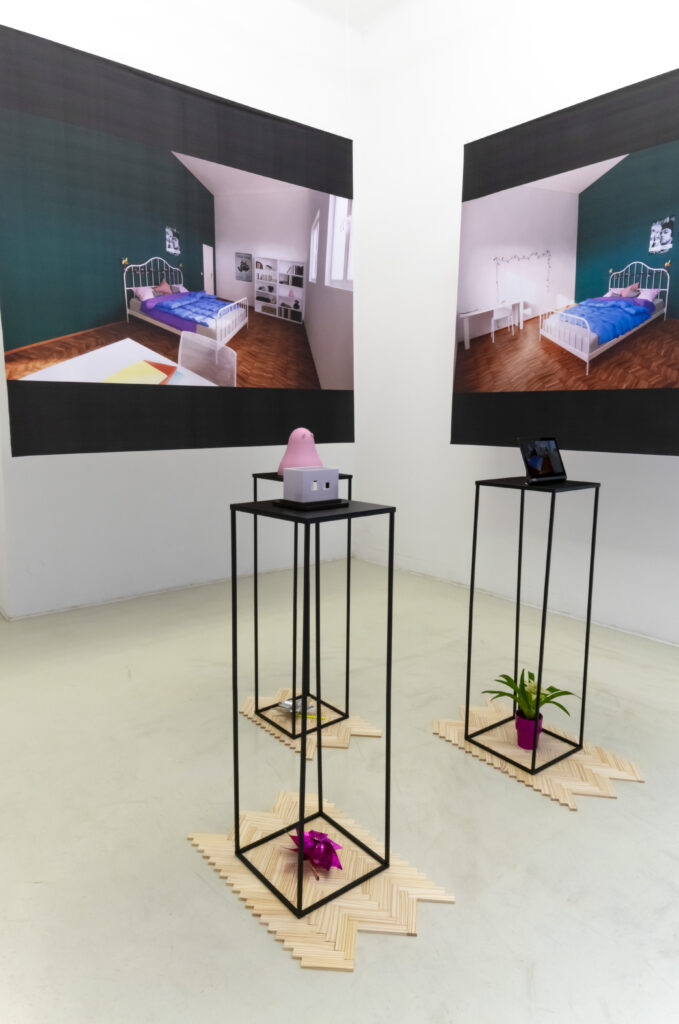
‘Substratum of memories, participant #3’ by Ana Loureiro
LMG: What artist/-s (dead or alive) would you like to meet? And if you had one question, what would you ask them?
AL: There is one artist that I like a lot. Her name is Paula Rego. Since I was a kid I was interested in her works. She is Portugese but she lived since a very young age in London. She is an artist who also uses her personal experiences, her emotions and thoughts about things that happened in her life. She was mainly a painter and expresses through her paintings all of these self-experiences in life and in Portuguese society at the time that she lived. When she was alive Portugal was still a dictatorship and life for women was very tough at that time. Through her paintings she was expressing her experiences as a woman at the time and also about Portuguese popular culture. She approaches thematics that are very close to women, like abortion and the difficulties of being a women in a patriarchal society, especially at that time. I remember in a documentary I saw about her that she said “In my paintings I can do things I can’t do in real life. I can say whatever I want.” There is no limit in art. You can express yourself however you want. You can become every kind of persona. You can clear your emotions through it. I don’t have a particular question that I would like to ask her because I think she says already so much through her works. There is a very emotional, non-rational side of her, on that is very connected to herself, that I really like, because art doesn’t need to be something very rational and everything should make sense. There is this side of ‘I do what I feel and what I see and what I experience’ that really makes me connected with it and enjoy her works.
LMG: I also like art that’s very honest and from the heart. I think it’s necessary in away to do that.
AL: Yes!
LMG: Is there something that you want to achieve in your art life? Dreams, future plans or projects you would like to do?
AL: One of the things that I learned in this decade is: ‘Don’t expect much and don’t make very longterm plans’ because you never know what’s coming. I did some projects alone and I also did some projects with people and in the future I would really like to do more projects together with other people and more cooperations. I really like to share the process and ideas and I like this idea of community and what we can learn with or from each other. I think the results are always very interesting. Sometimes it’s hard to work as a group because of different rhythms and different opinions but I think when you find the group or the person that matches your rhythm and really fits well with your ideas, it’s something which enriches you very much as an artist. I was lucky to do collaborations with very interesting people, which I really like. This is something that I would like to develop and have the opportunity to do more often in the future and also maybe do more residencies. I was lucky to be awarded next year with a residency in Finland, so it’s going to be my first big experience with residencies. I did a small one ten years ago in Porto when I was studying but this one will be my first one abroad and I’m very happy to do that because you go out of your working place, the place that you spend most of the time in and also explore other cultures, other ways of being and how this can influence your work. I hope that I’ll have the same feeling that I had when I came here, that I felt so motivated and inspired to do things and I hope that I’ll also have the same feeling.
LMG: Do you think there is something you can bring to this world through your work as an artist which you couldn’t in any other field of work?
AL: I think what I can bring is this freedom to work in thematics and the issues that I want to with a rhythm that I feel is more fitting to that work, which you can’t do in many other jobs. In other jobs you are very programmed to do certain things, work on tasks for other people, until a certain time of the day and then go home. In art you can be creative, you can work on the thematics you want to and develop your own works and express yourself, which in some other jobs you can’t do. It’s this freedom to create.
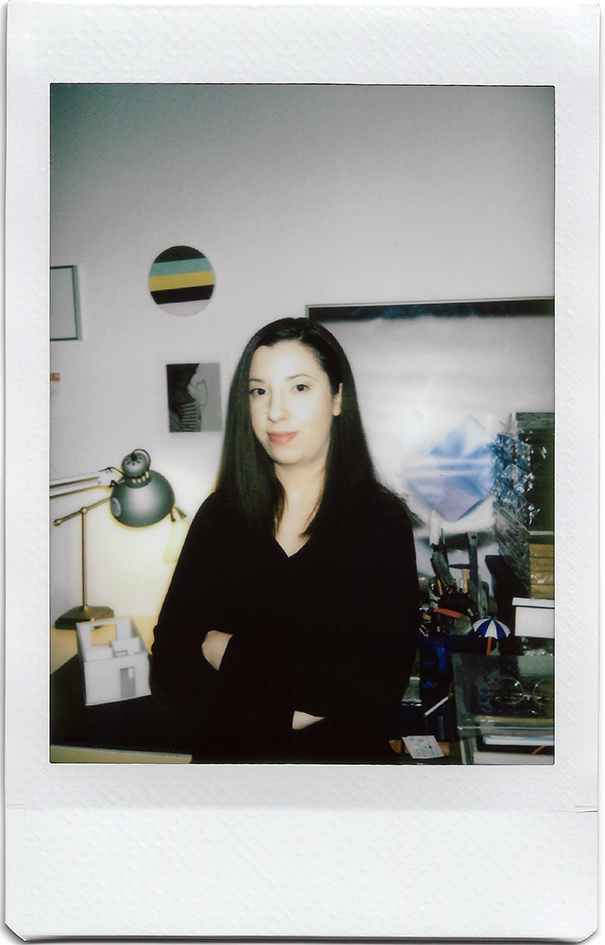
Copyright to all photos and artworks: Ana Loureiro
Instagram: https://www.instagram.com/analoureirofernandes/
Website: www.analoureiro.com




